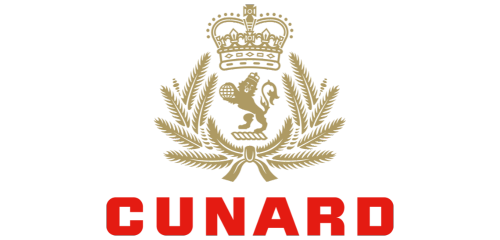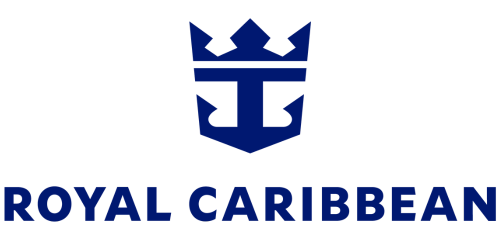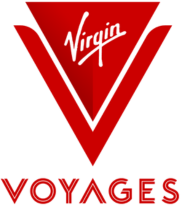Have a question about cruising? Our Cruise Experts have answered the most frequently asked cruise questions!
Can’t find the answer you’re looking for? Reach out to our Cruise Experts today.
General Enquiries
As part of your cruise fare, you will receive your onboard accommodation, main meals in the ship’s complimentary dining venues, onboard daytime activities and most entertainment.
You will require a passport to cruise internationally. Some close to home domestic sailings will only require a valid driver’s license. It is always recommended to have a valid passport whilst cruising and is your responsibility to ensure you have the applicable photo identification.
Certain countries do require you to obtain a visa in advance if you wish to disembark the ship in port. You will need to check the visa requirements for the countries visited on your cruise itinerary. Countries such as China, Russia, India, Canada and the USA require all New Zealand passport holders to obtain a visa.
Travel insurance is not mandatory on cruises, but we do highly recommend it! Having travel insurance allows you to cruise with confidence, knowing that you will be covered if unforeseen circumstances arise. Speak to our Cruise Experts about adding travel insurance to your cruise package.
We recommend booking your cruise as soon as you have decided on an itinerary, date and cruise ship. Most cruisers will have their cruise booked at least 12-18 months in advance to secure the best deals and preferred choice of cabin.
Most cruise ships have four main accommodation categories, each ranging in size, budget and inclusiveness. The most affordable option is an inside cabin, which has no window, followed by an ocean view cabin, which usually offers a porthole or a large picture window facing out to sea. To breathe in the fresh sea air, we recommend opting for a balcony cabin, which is increasingly becoming the most popular choice amongst our customers. If you’re after a more deluxe experience, consider booking a suite, which often comes with butler and concierge services.
Most staterooms onboard cruise ships cater for two guests; however, some cabins can accommodate up to four people, with additional beds that either fold down from the wall, or an additional sofa bed.
The best cabin location on a cruise ship ultimately depends on personal preference. Some passengers prefer to stay close to the ship’s main public areas and restaurants, while others prefer to stay in the quieter cabins, usually located at the front and back of the ship.
We recommend going through your ship deck plan with one of our Cruise Experts to select an available cabin most suitable to your needs. The further in advance you book your cruise, the more likely you will be able to secure your preferred cabin location.
Most cruise lines have accessibility measures in place for passengers with disabilities. Cruise ships typically offer a range of wheelchair-accessible cabins, however, the number of these may be limited. If you require an accessible cabin, please speak with our Cruise Experts so that they can liaise with the cruise line to ensure your needs are met.
Please note that ocean ships can be very large, which at times can be difficult for passengers with mobility problems to navigate. To make things easier, you can rent a scooter or wheelchair for the duration of your cruise.
Onboard entertainment can vary greatly depending on the ship. Most cruise lines offer a diverse schedule of daytime activities and many ships boast swimming pools, water slides and sports courts. At night, passengers can enjoy entertainment such as Broadway-style musicals, comedy shows, theatrical performances, live bands and music, and casino games.
Wifi is available on almost every cruise ship, although additional fees typically apply to access it. Most cruise lines offer wifi packages for purchase, and this wifi is available throughout the ship’s public areas, as well as in your cabin.
Keep in mind that wifi at sea can be relatively expensive – as an alternative, we recommend disconnecting whilst onboard and only using wifi in port. Most cruise ships will also have an internet café available if you do not wish to purchase a wifi package.
Whether or not your cruise has a dress code will depend on which cruise line you are sailing with. As a general rule, casual dress is accepted during the day, with smart casual or formal attire being required at night. Most cruise lines do not accept baseball hats, thongs, bare feet, swimwear or sleepwear in formal dining venues.
However, some cruise lines enforce a stricter dress code, with men required to wear jackets and women cocktail dresses at dinner. If you do not comply with your cruise line’s dress code, you may be asked to leave a particular venue. To check whether your cruise has a dress code, we recommend speaking with one of our Cruise Experts.
Laundry and dry cleaning services are available on almost every cruise ship, usually for a fee. However, some ships do offer self-service laundry facilities as well.
First Time Cruisers
Ocean Cruises
There is a wide range of itineraries, cruise lines and cruise ships to choose from for those seeking a taste of life at sea, or an incredible journey that spans horizons across many countries. Where the destinations come to you by way of sparkling seas, ocean cruising is an easy holiday where everything you could possibly need is within easy reach.
River Cruises
A leisurely cruise along the world’s ancient arteries is an inherently relaxing, and luxurious, way to travel. Whether you’re navigating medieval stretches of Europe or cruising Southeast Asia’s Mekong River, each new day on a river cruise brings a wealth of intriguing experiences.
Luxury Cruises
Michelin-star fine dining restaurants, butler service, and elegantly appointed suites are what you can expect onboard a luxury cruise ship. Luxury cruising appeals to those travellers searching for an unparalleled, all-inclusive travel experience.
Pick a cabin to suit your own preferences. If you want to be able to take in the incredible views in private, then select a cabin with a balcony. If you don’t think you will be spending much time in your room and want to save yourself some money, opt for a windowless inside cabin.
If you know you want to book a cruise but you’re unsure of the finer details, such as the destination or cruise line, then contact our Cruise Experts! If you have already made these decisions yourself, book directly with us by clicking on the links on our deal pages or calling 0800 101 728.
Determining where you will embark and disembark for your cruise can really help narrow down your options. You could start and end in the same local port (Brisbane or Sydney, for example), travel between local ports, or fly to an international destination and embark from there!
Locate the Port Agent
Your first port of call should be the Port Agent. Most cruise lines have Port Agents whose job is to assist any guests who have missed the ship. These agents are usually located within the vicinity of the port. The port agents can help you with accommodation, travel arrangements, contacting the ship and may be able to retrieve your belongings from the cruise ship staff, including essential items such as Passports and medications. Therefore, it’s important to keep an eye out for the Port Agents’ details and make a note of them. These can be found in the daily schedule or the newsletters onboard.
Get in touch with the ship
With the help of the Port Agent, your next course of action is to contact the ship’s staff and let them know what has happened. After, you’ll need to confirm the ship’s itinerary and figure out the next steps, such as which port you’ll be able to meet the ship and when.
Make a trip to your embassy
If you find yourself in an unfortunate situation where you don’t have your passport, you’ll need to make your way to your country’s embassy. Here, the staff will be able to provide you with options, such as cancelling and reissuing your passport (at a cost).
Cruise Seasons
For most cruise regions, there are periods of peak demand (high season), moderate demand (shoulder season) and low demand (low season). The summer months are generally peak seasons, regardless of the weather at home or in the region. Cruises during these periods need to be booked well in advance, and families especially need to take note of this, as some cruise lines limit the number of children per sailing, so you need to get in early. During shoulder and low seasons, you will usually find more bargains, but some low seasons have shrunk in many areas, thanks to the boom in new cruising destinations and home ports, so in some places, all seasons are priced ‘in season’.
High Season: June to August
Sailing during this season: In the months from June to August, the temperatures in Alaska are at their warmest, and the conditions are quite moderate, making it pleasant. An important factor to some travellers is the further into summer you are, the better your chances of seeing wildlife on the various expeditions. With so many ships now sailing into Alaska, there can also be a tremendous amount of congestion in the small port towns. To get a better price, you may also consider northbound glacier routes rather than southbound routes, as these tend to be cheaper.
Shoulder Season: May and September
Sailing during this season: In May and September, the crowds are often smaller, and the prices are slightly cheaper as a result of the weather with the high possibility of snow. May and September are the start and tail end of the traditional Alaskan summer cruise season, however still a very pleasant time to experience the majestic wilderness of Alaska, without the bustling summer crowds.
High Season: March to April; June to August; holiday sailings
Sailing during this season: If the kids are on holiday, it is high season for Hawaii cruises.
NCL offers week-long cruises all year round, while pricing will fluctuate during the above high season date range.
Low/Shoulder Season: Late August; November; August (minus the holiday weeks) and May
Sailing during this season: During autumn sailings, the ships are less crowded, but the weather is still great, so these tend to be popular ‘out-of-season’ cruises. January is one of the coolest and wettest times of the year in Hawaii, but the winter months are prime whale watching times. Hurricanes hardly affect the islands, but August and September are when they come closest, so the weather tends to be hot and humid, with frequent tropical storms.
High Season: June to August
Sailing during this season: Couples and families flock to these summer sailing dates, particularly in August, from all over the world, making for a nice cultural mix of passengers. This also means bigger crowds, higher prices, and hotter temperatures.
Low/Shoulder Season: March to May; September to November
Sailing during this season: This is the time to cruise the Med, minus all the children, and crowds. The weather is ideal in late spring and early autumn, but November can be quite wet in some areas of the Mediterranean.
High Season: June to August
Sailing during this season: Northern Europe is at its loveliest during the summer months, with ports that line the Baltic Sea and Norway’s fjords. The temperatures are generally balmy, the skies are clear and sunny, and the cities turn themselves inside out – life is lived outdoors, out on the water, roaming the city and sipping drinks at sidewalk cafes.
Low/Shoulder Season: May and September
Sailing during this season: The kids are back in school, the ports are less frenetic, the weather is still beautiful and crisp, and the prices are much lower.
High Season: December to April
Sailing during this season: While larger ships and Barrier Reef cruises are available year round, the specialty cruises are seasonal. Tasmanian cruises operate in the southern summer (November to March) while Top End cruises operate in the winter months (April to October). It really depends on what you are after, as the weather varies so much in Australia. If the Queensland heat is too much for you, perhaps consider a winter cruise.
Low/Shoulder Season: June to August
Sailing during this season: Australia’s winter months are the quietest for cruising, but it is during this time that you can find some great bargains and experience a few of the places you wouldn’t consider going to during the hotter months.
High Season: December to February
Sailing during this season: The weather in New Zealand is never so miserable that there’s no point in going, but with temperatures ranging from 20-30 degrees Celsius, the summer months are the peak cruising times. This also makes it probable to be more expensive and more crowded. It is also worth noting that the South Island can be colder than the North Island, even in summer.
Low/Shoulder Season: May to August
Sailing during this season: Cruises to New Zealand are offered all year round, and there are always things to see and do. May to August are the coldest months, and daylight hours are shorter, so cruising options are limited. The weather from September to November is, however, the hardest to predict.
High Season: July to August
Sailing during this season: Cruises operate year-round from Australia, Fiji and Tahiti, but the peak months coincide with the holiday season. In general, the drier months from May through to October are the most ideal for cruises to the South Pacific.
Low/Shoulder Season: November to April
Sailing during this season: This is considered the wet season, when the weather is hot, wet and humid, with frequent tropical storms. Keep in mind that this is also hurricane season, however, you can cruise here year-round with prices during the low season being significantly cheaper.
High Season: March to May; October to November
Sailing during this season: The weather in East Asia is most pleasant in the spring and autumn months. Specifically, cruising Japan in late March offers a chance to experience the famed cherry blossoms in bloom, while October to November brings beautiful autumn foliage. Keep in mind that late April to early May is Golden Week in Japan, which is the busiest and most expensive time of year.
Low/Shoulder Season: June to September; December to February
Sailing during this season: While there are fewer crowds during these times in East Asia, the weather can be extreme. June to September is often very hot and humid, while temperatures from December to February are bitterly cold, regularly dropping below freezing.
High Season: November to April
Sailing during this season: This is the most enjoyable time to cruise Southeast Asia, due to lower humidity levels and ideal weather for outdoor activities like snorkelling and kayaking. However, being high season, you can also expect higher prices and larger crowds at major attractions.
Low/Shoulder Season: May to October
Sailing during this season: In addition to hot and humid weather, this is monsoon season in Southeast Asia, which can bring intense levels of rain and wind. While the weather is slightly less favourable, there are also fewer people and lower fares during shoulder season.
Cruise Expert Advice
When selecting a Cruise Expert, we recommend making sure that the agency and agent is a member of CLIA which is the Cruise Line International Association. CLIA is the governing body of the cruise industry throughout the world, and all reputable agencies specialising in cruise should be CLIA accredited. Cruise Experts can only become accredited if they complete dedicated training and modules, along with service excellence and onboard ship experiences.
Cruise Experts are invited onboard cruise ships for private tours ranging from a ship inspection to weeklong voyages so they can truly immerse themselves in the ship, get to know the best things to do onboard and provide invaluable experience and knowledge to their respected clients.
Our Cruise Experts are here to answer all the questions you will most definitely have and to guide you through the sometimes-confusing process of issuing your travel insurance policy for you, booking airfares and planning pre and post–cruise arrangements. Whatever time of day and method of contact you prefer, whether it’s in person, over the phone, by email or by text, they will use to effectively communicate with you.
Cruise Experts take on the responsibility of doing the research for you, finding the best deals, informing you when you can book your shore excursions and specialty dining onboard, and reminding you when your final payment is due. They are also there for you whilst you are onboard if you happen to need assistance or, for example, if your flights get delayed or cancelled, they can assist in getting you re–booked to or from your destination.
Cruise Preparation
We highly recommend checking in for your cruise online ahead of time. While the process differs between cruise lines, you will usually need to create an account with your cruise line and enter your personal and booking details. When checking in online, you will usually get to choose from a few different boarding times, although some cruise lines do pre-allocate this for you. You can check in for your cruise here.
Yes, you can! After checking in for your cruise online, you can then begin personalising your cruise experience. Oftentimes specialty dining restaurants and shore excursions can book out, so we highly recommend locking these in ahead of time. Using your cruise personaliser, you can also notify your cruise line of any special requests, for example, arranging wine or flowers in your cabin to celebrate an occasion.
We recommend putting together all the necessary cruise documents around one to two weeks before departure. Log onto your cruise personaliser and print out all of your cruise documentation, along with your luggage tags.
Most cruise terminals across the world offer parking facilities, usually at a small fee per day.
Be sure to arrive at your embarkation port on time (preferably a little earlier) for your allocated boarding time, as selected during your online check-in. When embarking on your cruise, be sure to have your boarding passes printed, your luggage tags securely stapled to your bags and your passport at hand.
While every cruise terminal is different, they will all be signed accordingly, making it easy for you to drop off your bags and make your way through the security process. This is similar to an airport, with metal detectors and x-rays for smaller bags.
Once through security, you will approach the check-in counter, where you will have your photo taken and receive your onboard card, which will serve as your cabin key, onboard payment method and onboard ID. Your luggage will be delivered to your cabin during embarkation. Bon voyage!
Onboard Experiences
Today, many cruise ships feature innovative stabilising devices and advanced weather notification procedures which help to minimise the movement of the ship, which is what typically causes motion sickness.
If you are prone to seasickness, we recommend selecting a lower cabin in the middle of the ship and having some over-the-counter solutions available to ease your symptoms. If necessary, every ship has onboard medical services that can assist.
If you do feel seasick while onboard, the best thing you can do is get plenty of fresh air, look out over the horizon, and stay hydrated.
The best part of choosing a cruise holiday is that all your accommodation, food and activities are included in the price. However, there are some extra amenities and offers that you can pre-purchase before you sail or once you are onboard. These include beverage packages, specialty dining packages, shore excursions, gratuities, wifi packages and spa treatments.
Upon boarding your ship, you will be set up with an onboard guest account and receive a cruise cabin card that will act as your payment method whilst onboard. Every purchase you make onboard will be charged to this account, which you will need to finalise prior to disembarkation, via cash or credit card.
Most cruise lines offer cashless cruising. To access this, all you need to do is set up your account at the beginning of your voyage and then settle your bill at the end of the trip. The currency used onboard will vary between cruise lines, however, most things can be paid for using a credit card. Keep in mind that you will likely need local currency when in port to purchase drinks, snacks and souvenirs.
The tipping requirements will depend on the cruise line you are sailing with. In some cases, they are included in your cruise fare, while in others they are automatically added to your onboard guest account. We suggest checking with our Cruise Experts to confirm the tipping policy onboard your cruise.
Onboard credit can be used to purchase shipboard extras, such as drinks, entertainment, meals at specialty restaurants, shore excursions, spa treatments and gift shop items.
Drinks onboard most cruise lines are priced similarly to what you would pay on land. Beers range from $8 upwards; spirits range from $10 upwards; cocktails range from $14 upwards. Water, tea and coffee are usually complimentary.
If you are planning on drinking regularly during your cruise, we suggest purchasing an onboard beverage package. Depending on the cruise line, you can choose between a soft drink package or an alcohol package.
Most cruise lines do not allow guests to bring their own alcohol onboard, although we recommend checking with one of our Cruise Experts to confirm before setting sail.
It is almost impossible to get bored onboard a cruise! One of the most appealing aspects of cruising is that you can do as much or as little as you want onboard. There are endless options to keep your children occupied, no matter their age, and a huge variety of daily and nightly activities are on offer for adults.
When docking in port, you can choose to book a guided shore excursion (there are plenty to choose from at every destination) or catch a transfer into town and explore on your own. You can also opt to stay onboard the ship, which some people choose to do if they have visited the destination previously. The advantage to staying onboard is that you will practically have the ship to yourself – the pool will be far less crowded, spa treatments may be on special and there will be no lines at restaurants and bars.
We strongly suggest booking your spa treatments the day you embark on your cruise, as spa availability can fill up very quickly, especially on sea days. If you choose not to disembark on a port day, the spa may have some special deals and increased availability, as most passengers will be off the ship and in port.
Cruise lines can cater to a range of special diets, including vegetarian, vegan, lactose-free, dairy-free, gluten-free, diabetic, kosher and halal. They can also assist with specific allergy requirements, although it is best to notify your cruise line of any dietary requirements in advance so that they can prepare. Once onboard, we recommend speaking with the dining department to ensure your needs are met.
The tap water in your cabin is safe to drink. The water supply on a cruise ship must go through extensive filtration and testing to ensure it is safe for both passengers and crew. You can also purchase bottled water onboard if you prefer to drink from a bottle.
All cabins and public areas onboard cruise ships are strictly non-smoking. You can, however, smoke in the ship’s designated smoking zones, usually found in casinos, cigar lounges, cabin balconies and some outdoor areas. We recommend checking with the staff onboard your ship to determine where you can smoke.
Your valuables are best left at home, however, if you do wish to bring them with you onboard, they are best to be kept in your cabin safe.
All major cruise lines have fully equipped medical facilities onboard their ships with qualified medical staff who can assist in any type of medical emergency.
Cruise with Children
Spend some time doing research or speak to one of our Cruise Experts on your cruising options and ensure to choose one that is suited to your child’s needs and temperament. For example, if your little one is quite active and finds it hard to sit still, then consider selecting a ship with a kids club. If your child loves the water, consider a South Pacific or Caribbean cruise to spend your days by the beach, or if you’re after a more cultural and educational experience for your children, a European or Alaskan cruise would be ideal. Look for safe and fun destinations that will have something to offer the whole family.
Ships that offer babysitting options or feature an onboard kid’s cub are ideal as this allows you to have some ‘you time’ by hitting the casino, grabbing a few casual drinks at the bar, or sitting back and watching that enticing cabaret show. Don’t forget to check the age restriction policies on the ships and keep in mind many cruise lines differ.
A general rule across most cruise lines is any infants onboard must be at least six months old. This can vary depending on the destination, length of cruise, and how many consecutive days at sea are on the itinerary.
Although cruise lines all have their own different criteria when it comes to hiring their staff, most if not all ensure their kid‘s club staff have degrees in education or related children–focused fields, along with extensive experience working with children at schools or day care centres. Most teen areas onboard will also have a child counsellor present.
Most daytime activities for kids and teenagers are included in your cruise fare. You will usually have to pay an additional fee for babies and toddlers in the nursery, along with any late-night babysitting services. Small children are required to be signed in and out by their parents, however, older kids can sign themselves in or out. Most cruise lines have a kid’s club catering for children between the ages of 3–17 years old and are divided into age groups with different activities and areas suited to the different ages. Across most cruise line kid’s clubs, you will find activities such as arts and crafts, scavenger hunts, karaoke, pool parties, sports tournaments, teen lounges, trivia and theme parties. Be sure to check with your Cruise Expert what the kid’s club policy is for your cruise, as this does vary.
Existing Bookings
You will receive all of your travel documentation approximately one to two weeks before your departure date. These documents will be sent directly to your email.
At present, we do not send out reminders regarding payment due dates. We recommend noting the date on your Booking Advice to ensure the amount is paid before the due date. You will only receive a reminder if your final balance is overdue.
Yes. Once your booking is confirmed, your My Cruises consultant will generate a unique payment link to pay via our secure payment system. This will be issued to your nominated email address and will be for any outstanding amounts due. Once paid, you will receive an email receipt confirmation from our After Sales Team.
Your second deposit will be due approximately 10 to 11 months before departure. You can find all payment amounts and due dates on your Booking Advice. Please check under ‘Total Holiday Cost’ in the payment section of this document.
Your final payment will be due approximately four to five months before departure. You can find all payment amounts and due dates on your Booking Advice. Please check under ‘Total Holiday Cost’ in the payment section of this document.
Once you have paid your second deposit, our Air Team will begin looking into your flight options and be in touch via email once they have found the perfect flights for your holiday.
Our Cruise Experts are happy to extend your holiday. Please let us know if you are wishing to amend your flights after paying your second deposit. Please note that there will be a $75 per person deviation fee, and our air team will advise if there are any additional airfare differences on your preferred travel dates.
Our Cruise Experts are happy to add or remove people from your booking. Please note that fees may apply.
We offer flexible booking conditions; however, each booking will need to be looked at individually to determine whether an alternative departure is available. Please note that there will be an administration fee of $75 per person, along with any additional package prices should we be able to change your booking.
As per our Terms and Conditions, any voluntary cancellations after your deposit has been paid will incur a cancellation fee of $550 per person, along with any supplier charges.
Upon submitting your refund request, it can take between 12 and 16 weeks for us to receive your refund from our suppliers. Once your refund has been received by us, it must be processed by our finance team, which can take up to another 30 business days.
As travel requirements can change at a moment’s notice, we encourage you to visit Sherpa to keep up with the latest travel advice for your destination. For any major changes that may affect your booking, we will reach out to you directly.
















